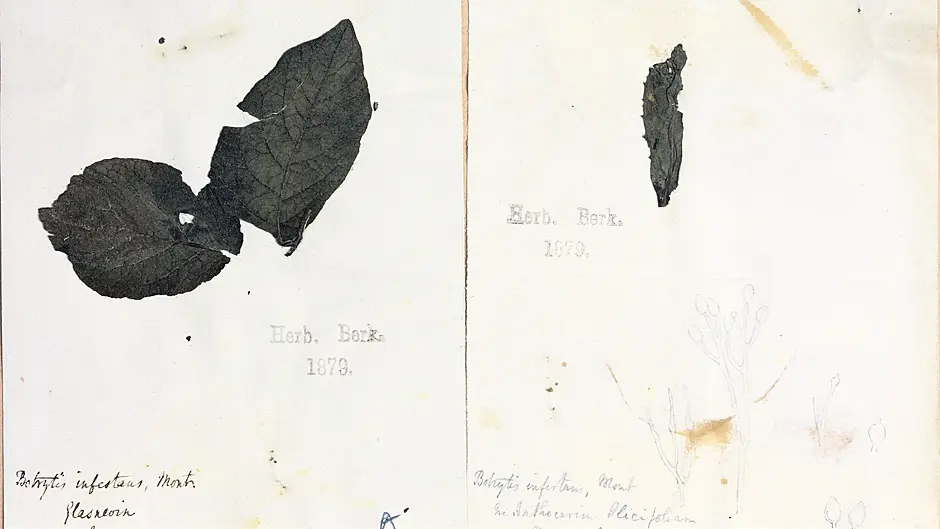ACTUAL leaves from diseased potato crops that devastated Ireland during the Great Famine still exist.
The leaves were sent to Gerard McCarthy who runs an annual Irish Famine Exhibition in the Stephen’s Green Shopping Centre in Dublin.
These leaves were originally taken from diseased potato plants at the Botanic Gardens in Glasnevin Dublin in 1846 and 1847.
Today they are stored securely in The Herbarium at the Royal Botanic Gardens at Kew in London.
The sight of these leaves, 177 years ago, and the smell of rotting potato plants, struck fear into the heart of Irish farmers and labourers across Ireland.
The pathogen that caused the blight was phytophthora infestans, a fungus-like micro-organism that infects potato plants through their leaves, but the full story had always been a mystery.
In 2013, using DNA from these leaves, researchers identified the specific pathogen responsible for the blight behind the Famine, by sequencing its genome.
Phytophthora infestans originated in the Toluca Valley in Mexico, some time after Europeans began colonising the Americas.
It turned out, contrary to expectations, that the strain that caused the Irish Potato Famine isn’t US-1, which still causes blights today around the world, but is an entirely new strain called Herb-1.
Looking through the genomes they recovered, the researchers found clear evidence that phytophthora infestans had undergone rapid diversification shortly after the arrival of Spanish invaders in the 1500s. It spread rapidly beyond the Toluca Valley to the rest of the Americas, and to Europe.
Herb-1 appears in the early 1800s, spreading to Europe in 1845 to infect the potato crops. It only died out in the early 1900s, to be replaced by the US-1 strain that continues to destroy crops around the world to this day.
See more on Gerard's website at www.theirishpotatofamine.com








